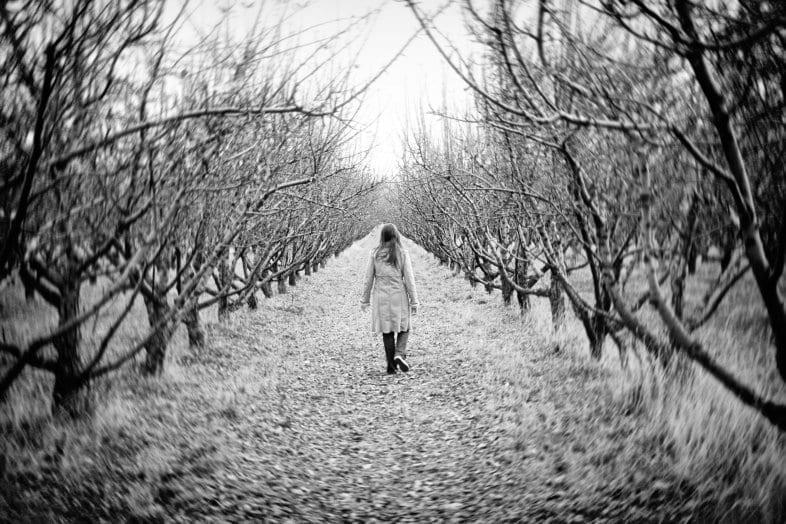
The Mystery of Death
- Bob Mueller
- Article
- Hospice
- Spiritual
In my work with hospice over the years, I have learned that the mystery of death is always there in the background, an ever-present anxiety that most of the time we effectively deny or push aside in order to live our daily lives. And then inevitably we’re forced to confront the reality of our own or a loved one’s death. Or perhaps we aren’t even given the time to say good-bye to someone we care about. Either way, our fear and panic, along with our grief, surface in Technicolor.
Every wisdom system until the modern period has taught that dying and being with those who are dying is the ultimate challenge and the greatest spiritual opportunity. Whether we are facing our own death or confronting the death of a loved one, there are a host of tensions that revolve around this mystery, and we can gain understanding by grappling with them.
When we’re faced with serious or terminal illness, we have the chance to decide whether to fight fiercely for life or surrender peacefully to death. We wonder when is the right time to let go, to prepare to die, to say good-bye.
If we’re a loved one, we agonize over whether to work toward closure and allow things to take their course or use every medical means necessary to keep the person alive, hoping a cure is possible. To paraphrase Dylan Thomas, we will rage against the dying of the light or go gently into that good night!
We always need to ask ourselves whether living as long as possible is the right option. I have come to trust the wisdom of the dying person. I have seen people fight fiercely for life and literally come back from comas; live years beyond the terminal prognosis given to them; gain time no one could have expected, while somehow maintaining quality of life.
I have also seen people who, unable to let go, died with incredible anxiousness and lack of peace. Others seem to surrender to death when those around them felt they were giving up before their time. Still others let go beautifully, taking the time that might otherwise be spent resisting death to settle their relationships, make peace with their lives, and then die with such little regret that all I can do is marvel and learn.
When to fight and when to let go – how hard to resist and how easily to surrender. There are no rules about dying. When society tries to determine a “one-size fits all” rule we wind up with Doctor Kevorkian on the one side and Terri Schiavo-type controversies on the other. We turn what ought to be a deeply personal and familial time into a public spectacle and an ideological battle. Death trumps all ideologies, and anyone or any system that thinks it is 100 percent right has allowed their fear to reach a dangerous extreme and is therefore disrespectful to the sanctity of life and the intimacy of death.
There is great courage in letting go and great courage in fighting. And, of course, there are often many stages people go through during the process of dying: denial, anger, bargaining, despair and acceptance. But they are not clean or linear. They bleed into each other and double back on each other and mask each other. Our feelings about death are moment truths; they change and evolve.
Coping with death is really the ultimate humility practice, and when we can hold the various truths and experiences together, there’s so much insight to be gained. There are moments of acceptance and moments of resistance; moments of fighting and moments of softening.
After over four decades of working in ministry and at hospice and sitting with people who are dying, as well as their families, I have become very pragmatic. Our responses to death do not have to be intellectually sound or consistent. Rather, they need to be existentially comforting and enlightening. My criteria are simple.
Does your view create less terror around death? Does your view support you as you fight for life until you’re ready to let go? Does it allow you and those around you to be more honest, more hopeful, calmer, more compassionate, more loving and even more joyful? Does it allow you to grasp the truth of the Ecclesiastes poet who wrote that there’s a time for birth and a time for death; to feel the intensity and beauty of the cycle of life?
There is no way to know how we will be when it is time for us to die. Plato, on his deathbed, was asked by his students for one final piece of wisdom. He said, “Practice dying.”
A second-century mystic sage put it this way: “Repent one day before your death.” Of course, none of us can really know when our time will come, but when that time does come, will we be ready? It all depends on how we are living right here, right now in this very moment, which could be our last.
Almost every day, we have the opportunities to embrace life more fully, to be free from pretense, to do the right thing for the right reasons. But we often put things off, thinking we still have time.
Whatever your theory of death, the ultimate test is: Does it help you harness death for the service of life? To be ready to die we have to be ready to live – to live with such care and passion that we redeem life from the harshness and absurdity that death imposes. The question becomes less about death than about what kind of person we want to be so we can die that much more fully alive.